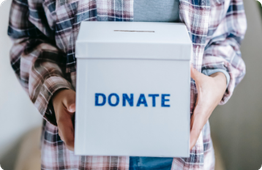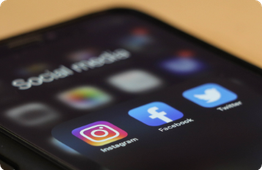Pain on the Brain
4th Jul 2023
Patient Voice Committee Vice-Chair Tim Atkinson attended the Annual Retreat of the Society’s Special Interest Group for Philosophy & Ethics. The following article is based on Tim’s talk at the event, where he explores the words and language we use to talk about pain.
I’m a teacher and writer from Boston in Lincolnshire. I’m Vice-Chair of the Patient Voice Committee of the British Pain Society, a volunteer with Pain Concern, Lived Experience Trainer on the Live Well With Pain programme and contributor to the Flippin Pain campaign.
So, that’s the intro, that’s the story. That’s the bit that makes sense. What doesn’t make sense, at first, is why I’m here as a chronic pain patient, talking about my own condition. Because I hate talking about illness, any illness - my illness, symptoms, feelings and all that stuff. I’m a typical man in that respect, and that doesn’t make it easy for those around me. As Philip Larkin once said, “Other people’s illnesses aren’t interesting: I mention mine only to excuse the probable dullness of what I shall write…” Then again, it isn’t easy for me, either. As Larkin also said in a letter to a friend, Judy Egerton, “your difficulties may be harder to bear, but mine are happening to me.”
I suffer from chronic pain as a result of Psoriatic Arthritis, a condition I’ve had for about thirty years. And for about twenty-nine of those years the only people I’ve actually spoken to about it are my wife and my doctor. And then under sufferance.
My pain is not severe, but it's always there. It’s the equivalent of background noise, a kind of low-grade pain always humming in the background, nociceptic tinnitus. I sometimes wonder what it would be like to have short-lived, severe, agonising pain and then nothing. In fact, that’s not something I wonder about much at all. Because I try not to think—as well as talk—about it very much, either. But not thinking about pain has become harder and harder over the years. Sometimes it refuses to remain in the background. Not quite severe, maybe, but severe enough to make the mask too difficult to wear, to make the effort of trying to smile, to talk, to listen, to appear normal too great a burden. And then there some days—rare, thankfully—when there is nothing but the pain. And that’s when not talking about it becomes a real problem.
But rather than say what’s really wrong, I make it up. If I can’t get out of bed in the morning, I’ve got a bug or a virus. Rather than say why I’m struggling to walk or why my wife is carrying our suitcases, I say I’ve got a bad back. It’s ok, I’ve found, to make your excuses to go to bed and lie down with a migraine. Attempting to give the real reason leads to more and more questions, questions that at times verge on an interrogation, followed by puzzled sympathy or barely disguised antipathy. So I lie. Do you blame me?
Only when you meet a fellow sufferer can honesty really be the best policy. But there’s really no point in talking about something so debilitating as your illness just because it’s something you both share in common. No. Talk between patients tends to be about treatments, coping strategies, healthcare horror stories, rather than ailments.
I don’t blame anyone else for any of this. Health talk is a bore. I don’t want to talk about it. But I’d really rather not lie about it either.
Which explains why I’ve spent the last couple of years researching pain in general and my own in particular; explains why I’ve begun talking about it at events like this and why I’m here. Because what I’ve learned is something I really want to share.
IF A TREE FALLS…
If a tree falls in a forest and nobody hears it, does it make a sound? If a man screams in agony and no one hears him, has he got a pain? Of course he has... or has he? He’s certainly in pain, suffering, hurting and yelling even though there’s no one there to hear him. But there’s an element of pain missing here. There is something about being ‘in pain’ that’s actually social and requires other people. Not the sensation, as such, but our definition of it, understanding and contextualising of it. There’s a script we learn from an early age: the words to use, gestures to make, faces to pull. We don’t have to do this but it becomes so inextricably linked with the pain we feel; it’s as much our communication of the pain as is saying ‘ow’. In fact, ‘ow’ is something we learn to say. Babies don’t say ‘ow’. Babies scream and yell. And someone hears them and begins the cycle of reinforcing the learned lessons of pain.
Joanna Bourke has said that it’s not that pain is hard to talk about, but that it’s hard for others to listen to. Elaine Scarry goes much, much further -
"Physical pain does not simply resist language, it actively destroys it, bringing about an immediate reversion to the sounds and cries a human being makes before language is learned. To witness the moment when pain causes a reversion to the pre-language of cries and groans is to witness the destruction of language; but conversely, to be present when a person moves up out of that pre-language and projects the facts of sentience into speech is almost to have been permitted to be present at the birth of language itself."
WHAT DO YOU MEAN?
Pain is a hard word to share. It’s a hard word to pin down. Pain can be sharp, dull, stabbing, burning, numbing, excruciating. Finding a way to communicate pain leads to all sorts of creative solutions, poetic metaphors and onomatopoeia all designed to bridge the gap between the speaker and the listener.
Words are like that. We call things names and by doing so, we attempt to share an understanding with other people. Names are like sweets, those tubes of sweets in rolled foil and paper - fruit pastilles, say. And if I do say ‘fruit pastille’ you’ll know what I mean. You’ll have an image of a fruit pastille. You might even have the taste of a fruit pastille in your mouth. It might be a nice or nasty taste, it doesn’t matter. You don't have to share my taste in sweets. But we share enough to talk about them, agree or disagree about the sweets we like. Or don’t.
It doesn’t just seem as if you prefer the green ones to the red. It cannot just “seem” that someone is in pain, or so Wittgenstein thought. You just are!
It’s important here to stress that in the philosophy of mind, pain is both the object and the sensation, so it really occupies a unique position. It is both appearance and reality. When I feel pain, pain is both the sensation and the object of sensation. Of course this already raises questions for the traditional medical model, where pain is the sensation and a structural injury is the object. But then, we all know that already.
Don’t we?
WHERE DOES IT HURT?
Like most people, I suspect, I was brought up with the classical theory of pain. The classical theory of pain is probably the one that accords with common sense notions of what pain is. Something happens (you hit your head) and as a result, you feel pain. Simple.
Physiologically that seems consistent with what's happening to the body. Philosophically, this idea goes back at least as far as René (cogito, ergo sum) Descartes. Intuitively, this is what we think is happening. It’s like an alarm system for the body, in which danger (fire, say) is transmitted from our hand, when we place it in the fire, to our brains which then scream ‘Ahh! Hot!’ and cause us to pull back, pretty damn quick. The blistering, burnt skin that then throbs is both an indication of the damage done and a warning not to do something so damned stupid again.
TIS BUT A SCRATCH
Because if you put your hand in the fire and it burns, it hurts for a reason. Stay away from the fire. But what about those gut-wrenching, bowel-crushing stomach cramping waves of nausea and diarrhoea that hurt like hell, that dwell and build before anything starts to happen and that are so... wasteful, pointless? Or the pain of cancer when all hope of being cured has gone, when the tumour’s got you and got hold of you and isn’t letting go until you’re gone? Or period pain? Those agonising, cramping, debilitating, death-wish inducing products not even of an illness or injury or poison but of the natural way of things, the only way of things, the only way life has —we have—of keeping going?
What’s the point? What’s the evolutionary point of that? Because if pain was simply an alarm, or if it was entirely caused by tissue damage and explained physiologically how can we explain things like phantom limb pain, or pain from severe injury that people—at the time—don’t even feel?
And how come small things (like stubbing your toe) can hurt like hell while others (stress fracture in a race) don’t seem, at the time, to matter? There’s more to pain than the physical damage signal to the brain and your brain has more to do with the pain you feel than anything else. It’s possible to control pain without drugs by doing all sorts of things - swimming, meditating, breathing deeply - but above all, by taking control.
MAN UP!
It’s a cliche, maybe, but your average rugby player seems to want to stay on the field at all costs (to his own health and bodily integrity) compared to your average footballer. For the latter, the merest tap seems to induce an agonising roll on the turf, if only in an attempt to persuade the referee to award a penalty. Pain can sometimes be competitive, either in terms of who can withstand more of it or who can gain most by faking it.
A rather amusing Twitter spat ensued a while ago after someone called @_sargee tweeted a picture of a footballer’s bloodied patellas along with the message: ‘Until women experience this, I don’t wanna hear about period pains.’ The post gathered an astonishing 17,657 likes and almost 4000 re-tweets. Among the many replies, mostly from women, was the frankly excruciating:
"Oh darling, I have grazed my knees so badly that I now have scars. I had hydrogen peroxide poured into those open wounds and witnessed my own flesh bubbling as they were disinfected, but nothing compares to the debilitating pain of period cramps…" (@RowleyMadelaine)
Or how about this? ‘Football is for big time pussies. Periods definitely hurt more than any injury I’ve seen in football. I’ve seen more broken nails take down footballers than a woman’; @Elennar_Linwen said, ‘I did this to my knee many times… and it was both less painful and less bloody than my period. Get back to me when you’ve had a period.’ The exchange was perhaps best summed up by the pithy, ‘No uterus, no opinion’ from @lisaaalevi. Enough said.
BEWARE OF THE DOG
Nietzsche famously named his pain and called it ‘dog’. But the thing about Nietzsche’s dog is this. It’s exclusive. It means we can’t share it. We don’t have a shared understanding of the term and so we can’t enter into his world and approach his experience. He might as well have put up a fence, a big, high fence with a huge ‘Beware of the Dog’ notice to keep the world out. This is private pain. A private word for private pain, for something Nietzsche wants to keep that way - private. Maybe that’s what Nietzsche was doing. Naming it ‘dog’ avoids all these problems. But what if you like dogs? What if you like pain?
SPANK ME?
Our basic instincts seem all about avoiding pain and seeking pleasure. But there are those (22% of men and 12% of women, according to Kinsey) who actually enjoy pain. To those, like me, who can’t avoid it, this seems odd, to say the least. But understandable. Explanations abound, from suggestions that it involves transforming fears and phobias into fantasy, making the traumatic erotic, to releasing the natural, chemical high of your endogenous morphine—endorphins.
Is that the same thing runners and other exercise-freaks get off on? Is the ‘wall’ in long-distance running the equivalent of the welt in sexual masochism? Maybe. You hate the thought of pain, so you make pain pleasurable, at least subconsciously, runs the theory. Rather like the grit in an oyster, the sexual imagination takes something uncomfortable and makes something pleasurable out of it, transforms fear into desire, converts something troubling into something sexually exciting. Spanking used to be regarded as le vice Anglais for precisely this reason. Those forced to submit to the cruel regime of an English boarding school spent their adult lives, so it’s said, actively re-living the scenes of their painful childhood humiliations—only this time, in the bedroom, and enjoying it. Because beyond the initial shock there lies a magic garden where your body—crying out in agony—insists that the brain open the flood gates to some pretty high-end natural opioids.
Of course this can only really happen if the pain is transitory. If your pain—however sharp—is brief, you get the full effect. That’s why heroin feels so good to those who use it recreationally. At least, initially.
‘All becoming and growing—all that guarantees a future—involves pain,’ wrote Friedrich Nietzsche in Twilight of the Idols. And there’s no doubt that pain can be good for us: plenty of people embrace it, and not only in the bedroom. Athletes routinely push their bodies through painful limits as part of their training; religious ascetics submit to mental and physical pain as a means of spiritual enlightenment. But the pain in such cases is a means to an end. In BDSM, the pain seems to be an end in itself. Or is it?
It might not actually be as painful as it looks, anyway. There is evidence to show that sexual arousal can increase pain tolerance by 36 per cent and an orgasm raises that to a hefty 75 per cent. The key to such effective pain relief seems to be a little-known part of the brain about the size of a prune. In fact, the insula cortex has been regarded as no more important than a prune for most of the last fifty years. But this little area turns out to be vital in processing emotion, and both the insula and anterior cingulate are active when processing pain and during sexual arousal. Could this, perhaps, account for how pain sensations linked to sex can somehow end up feeling pleasurable? The jury’s out on this one, but it’s a fascinating theory.
And—bizarrely for such an overtly submissive sexual activity—the attraction may ultimately come not from surrender, but control. There’s a strict rule in BDSM practice: the safe word. In the world of BDSM, safe words are the holy of holies. If the sub (the one on the receiving end) says ‘orange’ or ‘pineapple’ or whatever the agreed word is then that’s the end of play for the day. They can scream, ‘Stop!’, ‘No!’, ‘Please!’ and ‘Don’t!’ or revert to the Elaine Scarry’s pre-language state as much and as loud as they like, but unless one of the words they scream is the agreed safe word, the game goes on.
THE BDSM BRAIN
Ultimately perhaps that’s the biggest nail in the coffin of the classical theory of pain. Because with a measure of control over pain, we can tolerate it better. And—bizarrely for such an overtly submissive sexual activity—the attraction of BDSM may ultimately come not from the apparent (to an onlooker) surrender, but control.
Academic studies back this up. In The Domesticated Brain, Bruce Hood recounts an experiment in which participants were given electric shocks. Those who were told beforehand that they could stop the experiment whenever they chose were able to withstand more pain. Those who were given the impression (it was nothing but ethical, in case you’re wondering) of not entirely having agency over the process (though they had, of course, volunteered to participate) did less well.
Kathryn Hartley’s 2017 study illustrates this quite clearly. Two groups of volunteers played a computer game where the jeopardy didn’t depend on the on-screen graphics but a real-life electric shock to the player. Both groups were shocked when a dot moved through a maze; one group could help navigate the dot as it moved through the maze. The other could only sit and watch. And, yes, the same mild electronic shock hurt the second group more than the first. Being able to do something, however small, made a measurable distance to what they felt.
And it’s not only control. It’s expectations.
"We moderns have an arsenal of tranquillisers and painkillers at our disposal, but our expectations of ease and pleasure, and our intolerance of inconvenience and discomfort, have increased to such an extent that we may well suffer from pain more than our ancestors ever did.’ What can this mean? That our ancestors suffered the same—or rather, worse—pain than us but simply bore it stoically, perhaps because they didn’t expect not to be in some sort of pain, at least some of the time?" Yuval Noah Harari, Sapiens
The tablets, the analgesics, the painkillers and narcotics aren’t only less effective because we develop a tolerance to them. They become less effective because they erode our own means of control, remove our agency, distort our expectations of what pain is and what it’s for.
WORDSWORTH
And, of course, it’s not just our expectations but our emotions that affect the duration and intensity of the pain we’re feeling. Pain and anxiety feed off each other in a devastating dynamic, a sinister symbiosis that can be debilitatingly destructive. Wordsworth was well aware of it.
Wordsworth had suffered from pains in his side since the age of seventeen. Later, writing added nervous headaches to a list of ailments that often - according to his sister Dorothy's journal - seemed to accompany his attempts to make poetry.
There was nothing physically wrong with Wordsworth. And despite his close friendship with notorious addicts like Coleridge and de Quincey, he didn’t turn to laudenum to relieve his symptoms, either.
He might have suffered for his art, but he turned pain into poetry…
"If this great world of joy and pain
Revolve in one sure track;
If freedom, set, will rise again,
And virtue, flown, come back:
Woe to the purblind crew who fill
The heart with each day’s care;
Nor gain, from past or future, skill
To bear, and to forbear!"
And he produced that poetry in motion, composing when walking, either committing the words to memory or having Dorothy (herself no mean rambler) scrambling after him with her notebook and pencil, taking down his jottings like some unpaid amanuensis and, not infrequently, adding ideas and words of her own to her brother’s musings. Thomas De Quincey reckoned that, in the course of his life, Wordsworth must’ve walked some 175,000 miles.
BUM, BUM, BUM…
"He would set his head a bit forrad, and put his hands behind his back. And then he would start bumming, and it was bum, bum, bum, stop; then bum, bum, bum reet down till t’other end, and then he’d set down and git a bit o’paper out and write a bit; and then he git up, and bum, bum, bum, and goa on bumming for long enough right down and back again. I suppose, ya kna, the bumming helped him out a bit."
That “bumming” (in the memorable description of a Westmoreland farmer who had seen Wordsworth pacing up and down the gravel path at Rydal Mount) wasn’t just helping his poetry. It so happens that walking was also the very best thing Wordsworth could have been doing for his pain, too. Only last week The Times reported on the benefits of walking under the headline “Want to Boost Your Fitness and Your Brain? Start Walking.”
But it’s much, much more than just a way to get fit or lose weight. Shane O’Mara in his book In Praise of Walking calls walking our ‘hidden superpower’, because it’s what we’ve evolved, uniquely, to do. The human brain allows us to do much more than just geo-plot our location as we make our way bi-pedally across our neighbourhood Savannah. Just as Wordsworth discovered, it was a great way to deepen your interactions with your environment, to appreciate the essential interplay between the inner and the outer worlds. Wordsworth, Coleridge and the rest were all acutely aware that their romantic perceptions were as much informed by memories of past experiences as by the immediate sensory data that was before them. What they brought to what they saw helped shape their perception of it. Wordsworth’s famous daffodils are much more than just the flowers he remembers, dancing in the breeze. The Romantic revolution these literary giants started was based on the understanding that we partly observe and partly create the world about us. What we feel is as much about what we bring to an experience as the data we receive. And with individual agency (perhaps the most romantic notion of them all) we can take control of our destiny.
And if that isn’t a metaphor for pains self-management when all is said and done, then I don’t know what is!
Tim Atkinson is the Vice-Chair of The British Pain Society’s Patient Voice Committee. For over twenty years Tim held a variety of middle and senior management positions in a number of schools. He is now a full-time author and has written on a range of subjects newspapers, journals and blogs, as well as appearing on national radio and TV. Tim provides expert input in the creation of pain management resources and programmes and is the author of a memoir (Where Does it Hurt?) about life with chronic pain. Follow Tim on Twitter @dotterel
The British Pain Society’s Philosophy & Ethics Special Interest Group covers a broad and diverse range of subjects, including alternative and complimentary therapies, self-management and perspectives of pain, and pain’s relationship to art, music, culture, and literature. To find our more about the Group, please click here.
The British Pain Society's Patient Voice Committee works with patient representatives to improve patient information and to ensure that patients are consulted during the decision-making processes of the Society. Find out more about their work here.





